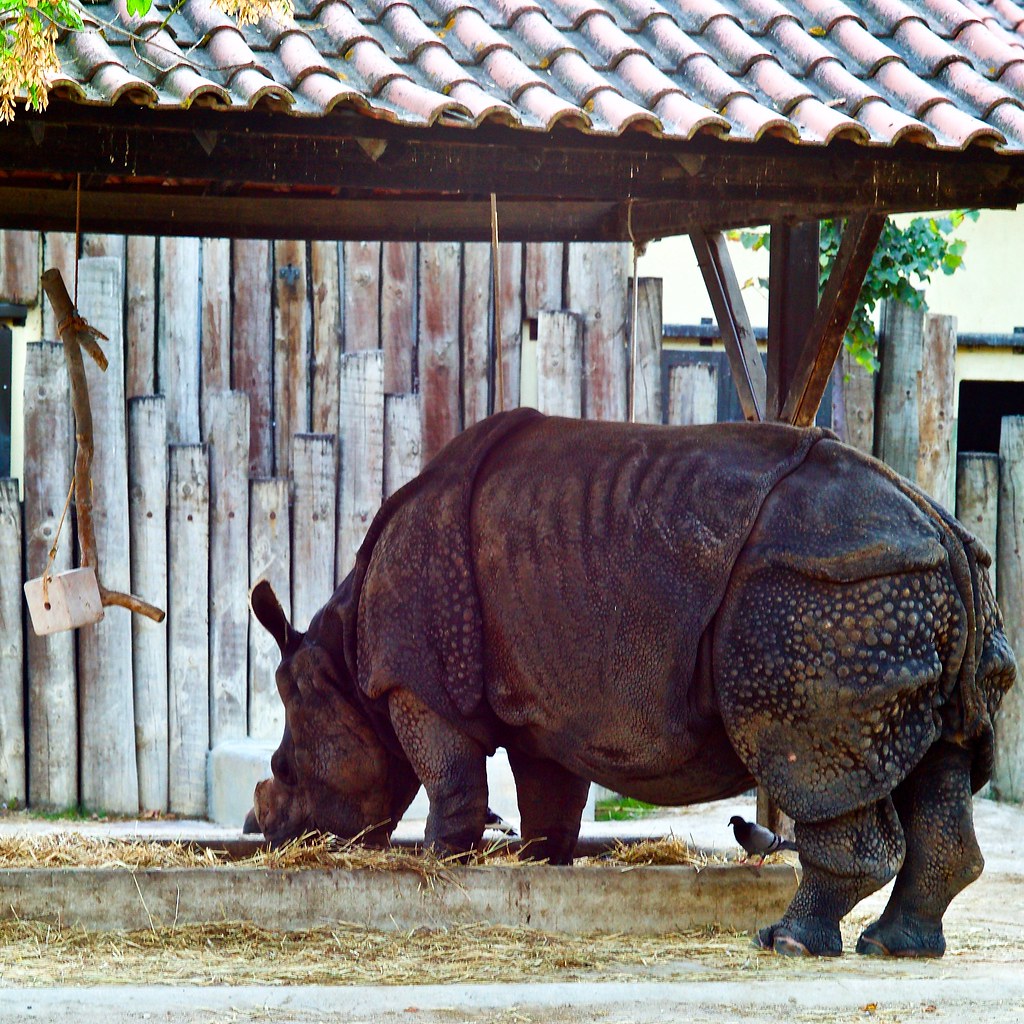
Nearly 85% of the global Indian rhinoceros population is concentrated in Assam, where Kaziranga National Park contains 70% of rhino population. However, poaching remains a continuous threat, as more than 150 Indian rhinos were killed in Assam by poachers between 20. Since then, numbers have increased due to conservation measures taken by the government. In the early 1990s, between 1,870 and 1,895 Indian rhinos were estimated to have been alive. Indian rhinos once ranged throughout the entire stretch of the Indo-Gangetic Plain, but excessive hunting and agricultural development reduced its range drastically to 11 sites in northern India and southern Nepal. Pobitora Wildlife Sanctuary in Assam has the highest density of Indian rhinos in the world with 84 individuals in an area of 38.80 km 2 (14.98 sq mi) in 2009. Kaziranga National Park alone had an estimated population of 2,048 rhinos in 2009. As of August 2018, the global population was estimated to comprise 3,588 individuals, including 2,939 individuals in India and 649 in Nepal. Moreover, the extent and quality of the rhino's most important habitat, the alluvial Terai-Duar savanna and grasslands and riverine forest, is considered to be in decline due to human and livestock encroachment. It is listed as Vulnerable on the IUCN Red List, as populations are fragmented and restricted to less than 20,000 km 2 (7,700 sq mi). If this article can play the tiniest role in discouraging the rhino horn trade, and encourage just one person to add rhinos to their itinerary, we'll consider it a success.The Indian rhinoceros ( Rhinoceros unicornis), or Indian rhino for short, also known as the greater one-horned rhinoceros or great Indian rhinoceros, is a rhinoceros species native to the Indian subcontinent. We think tourism is playing a major role in the conservation of animals (not just rhinos) and nature as a whole, and we are crazy about conservation. Tourism also leads to many other economic benefits for the locals. Tourism activities such as visiting the national parks help generate some money which protects these habitats for rhinos and other animals that share the ecosystem. When you go on safari to see some of these animals, including rhinos, we do hope that this prior knowledge makes your fascination with them, and your time in the wild even more elevated. The fact that they get killed for what is essentially human hair is unimaginably sad, and yet true. Rhinos are definitely interesting animals that are fun to see in their natural environment. The estimated population numbers are from the International Union for the Conservation of Nature and Natural Resources ( IUCN Redlist). Let us look at the conservation status of each of the species since the dangers they face are serious. Some of the 5 species are stable, others are not. Are Rhinos Endangered?īecause of the poaching and decreasing habitat, the conservation status of the rhinoceros. Increasing human populations lead to increasing human activity that ends up taking more land and encroaching on the habitat that rhinos call home. Rhinos face another human threat in terms of habitat loss. Young rhinos can however be preyed on by lions, hyenas, African wild dogs, and crocodiles. Other black market buyers are collectors who want animal products as trophies.Īside from the poaching, adult rhinos have no predators in the wilderness. The Rhino horn sells for the same price as gold - sometimes even higher. These rhino parts, especially the horn are believed to have healing qualities and thus command a high price, especially in Eastern Asia. What's The Difference Between Black & White Rhino
#Rhinoceros height and weight skin#
The skin is formed from layers of collagen.īesides having thick skin, the rhino's skin is very sensitive - just the same way as the elephant's skin. Rhinocerous have thick skin that can measure between 1.5 and 5 centimeters thick. This doesn't mean that rhinos aren't intelligent because they are, and can easily be trained.

How Big Is A Rhino's Brain?Ī rhino has a relatively small brain 400 - 500 grams for an animal of its enormous size.

While the rhino's horn is highly sought after by poachers who supply the illegal black market in wildlife, the horn is made up of the same components as human hair or fingernails. At times, a third horn will also grow in any of the African rhino species. The easiest way to identify a rhino is by its horn. A rhino's horn can grow significantly throughout its whole life and reach up to 150 cm (1.5 meters).Īfrican Rhinos have two horns on their head and the front horn is usually the larger one.


 0 kommentar(er)
0 kommentar(er)
